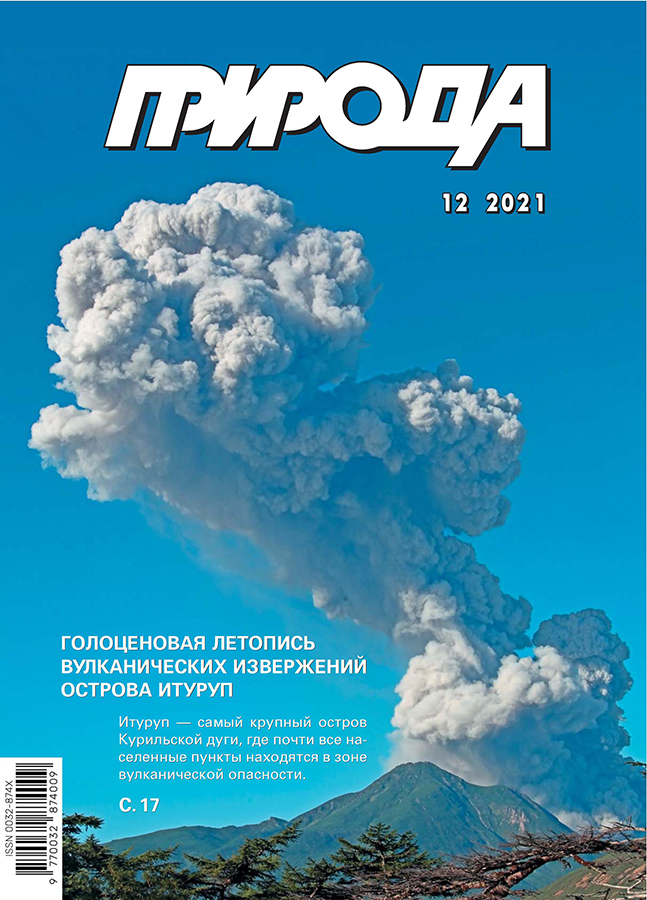2021 Nobel Prize Laureates in Physiology or Medicine: David Julius and Ardem Patapoutian
- Autores: Kolesnikov S.S1
-
Afiliações:
- Institute of Cell Biophysics, RAS
- Edição: Nº 12 (2021)
- Páginas: 45-52
- Seção: Articles
- URL: https://journals.eco-vector.com/0032-874X/article/view/628089
- DOI: https://doi.org/10.7868/S0032874X21120073
- ID: 628089
Citar
Texto integral
Resumo
The Nobel Prize in Physiology or Medicine 2021 was awarded to American scientists David Julius and Ardem Patapoutian “for their discoveries of receptors for temperature and touch”. These receptors are actually cationic Ca2+-permeable channels that detect thermal or mechanical disturbances of the cell membrane and convert them into changes in membrane potential and intracellular Ca2+ concentration. The article discusses the retrospective aspects of the research and its key results, which have been so highly praised by the Nobel Committee.
Palavras-chave
Sobre autores
S. Kolesnikov
Institute of Cell Biophysics, RAS
Email: staskolesnikov@yahoo.com
Pushchino, Moscow Oblast
Bibliografia
- Govindarajan V.S., Salzer U.J. Capsicum-production, technology, chemistry, and quality. Part 1: History, botany, cultivation, and primary processing. Crit. Rev. Food Sci. Nutr. 1985; 22(2): 109–76. doi: 10.1080/10408398509527412.
- Georgescu S.R., Sarbu M.I., Matei C. et al. Capsaicin: Friend or Foe in Skin Cancer and Other Related Malignancies? Nutrients. 2017; 9(12): 1365. doi: 10.3390/nu9121365.
- Thresh L.T. Isolation of capsaicin. Pharm. J. 1846; 6: 941–942.
- Porszasz J., Jancso N. Studies on the action potentials of sensory nerves in animals desensitized with capsaicine. Acta Physiol. Acad. Sci. Hung. 1959; 16: 299–306.
- Caterina M.J., Schumacher M.A., Tominaga M., … Julius D. The capsaicin receptor: a heat-activated ion channel in the pain pathway. Nature. 1997; 389(6653):816-24. doi: 10.1038/39807.
- Wu L.-J., Sweet T.B., Clapham D.E. International Union of Basic and Clinical Pharmacology. LXXVI. Current progress in the mammalian TRP ion channel family. Pharmacol. Rev. 2010; 62(3): 381–404. doi: 10.1124/pr.110.002725.
- Samanta A., Hughes T., Moiseenkova-Bell V.Y. Transient receptor potential (TRP) channels. Sub-cell. Biochem. 2018; 87, 141–165. doi: 10.1007/978-981-10-7757-9_6.
- Clapham D.E. TRP is cracked, but is CRAC TRP? Neuron. 1996; 16(6): 1069–1072. doi: 10.1016/s0896-6273(00)80132-4.
- Nilius B., Mahieu F., Karashima Y. et al. Regulation of TRP channels: a voltage-lipid connection. Biochem. Soc. Trans. 2007; 35(Pt 1): 105–108. doi: 10.1042/BST0350105.
- Cao E., Liao M., Cheng Y., Julius D. TRPV1 structures in distinct conformations reveal activation mechanisms. Nature. 2013; 504(7478): 113–118. doi: 10.1038/nature12823.
- Liao M., Cao E., Julius D., Cheng Y. Structure of the TRPV1 ion channel determined by electron cryo-microscopy. Nature. 2013; 504(7478): 107–112. doi: 10.1038/nature12822.
- Caterina M.J., Rosen T.A., Tominaga M., … Julius D. A capsaicin-receptor homologue with a high threshold for noxious heat. Nature. 1999; 398(6726): 436–441. doi: 10.1038/18906.
- Dhaka A., Viswanath V., Patapoutian A. Trp ion channels and temperature sensation. Annu. Rev. Neurosci. 2006; 29, 135–161. doi: 10.1146/annurev.neuro.29.051605.112958.
- McKemy D.D., Neuhausser W.M., Julius D. Identification of a cold receptor reveals a general role for TRP channels in thermosensation. Nature. 2002; 416(6876): 52–58. doi: 10.1038/nature719.
- Peier A.M., Moqrich A., Hergarden A.C., … Patapoutian A. A TRP channel that senses cold stimuli and menthol. Cell. 2002; 108(5): 705–715. doi: 10.1016/s0092-8674(02)00652-9.
- Story G.M., Peier A.M., Reeve A.J., … Patapoutian A. ANKTM1, a TRP-like channel expressed in nociceptive neurons, is activated by cold temperatures. Cell. 2003; 112(6): 819–829. doi: 10.1016/s0092-8674(03)00158-2.
- Julius D. TRP channels and pain. Annu. Rev. Cell Dev. Biol. 2013; 29:355–384. doi: 10.1146/annurev-cellbio-101011-155833.
- Corey D.P., Hudspeth A.J. Response latency of vertebrate hair cells. Biophys. J. 1979; 26(3): 499–506. doi: 10.1016/S0006-3495(79)85267-4.
- Katta S., Krieg M., Goodman M.B. Feeling force: physical and physiological principles enabling sensory mechanotransduction. Annu. Rev. Cell Dev. Biol. 2015; 31: 347–371. doi: 10.1146/annurev-cellbio-100913-013426.
- Sukharev S.I., Martinac B., Arshavsky V.Y. et al. Two types of mechanosensitive channels in the Escherichia coli cell envelope: solubilization and functional reconstitution. Biophys. J. 1993; 65(1): 177–183. doi: 10.1016/S0006-3495(93)81044-0.
- Cox C.D., Bavi N., Martinac B. Bacterial mechanosensors. Annu. Rev. Physiol. 2018; 80: 71–93. doi: 10.1146/annurev-physiol-021317-121351.
- Kefauver J.M., Ward A.B., Patapoutian A. Discoveries in structure and physiology of mechanically activated ion channels. Nature. 2020; 587(7835): 567–576. doi: 10.1038/s41586-020-2933-1.
- Coste B., Mathur J., Schmidt M., … Patapoutian A. Piezo1 and Piezo2 are essential components of distinct mechanically activated cation channels. Science. 2010; 330(6000): 55–60. doi: 10.1126/science.1193270.
- Murthy S.E., Loud M.C., Daou I., … Patapoutian A. The mechanosensitive ion channel Piezo2 mediates sensitivity to mechanical pain in mice. Sci. Transl. Med. 2018; 10(462): eaat9897. doi: 10.1126/scitranslmed.aat9897.
- Woo S.H., Lukacs V., de Nooij J.C., … Patapoutian A. Piezo2 is the principal mechanotransduction channel for proprioception. Nat. Neurosci. 2015; 18(12): 1756–1762. doi: 10.1038/nn.4162.
- ZengW.Z., Marshall K.L., Min S., … Patapoutian A. PIEZOs mediate neuronal sensing of blood pressure and the baroreceptor reflex. Science. 2018; 362 (6413): 464–467. doi: 10.1126/science.aau6324.
Arquivos suplementares









